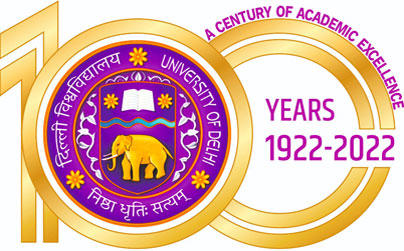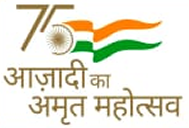The Gita: Navigating Life Challenges
Credits
Lecture
Tutorial
Practical/Practice
Eligibility criteria
Pre-requisite of the course
- To explore the universal principles of the Bhagawad Gita and their relevance to modern life challenges across cultural backgrounds.
- To develop self-awareness and the spirit to overcome obstacles in personal and professional lives.
- To empower students to cope with problems and dilemmas.
- Analyse different stages of self-knowledge identified in the Gita.
- Relate solutions provided in the Gita to personal and academic challenges.
- Develop a resilient approach to life by embracing values such as equanimity, compassion, and self-awareness.
- Demonstrate improved stress management and mindfulness practices inspired by the Gita’s guidance.
UNIT- I The Context of the Bhagawad Gita (4 hours)
- Understanding the universal relevance of the Gita
- Doubts, fears, apathy and dilemmas as stepping stones to growth and evolution: Arjuna’s dilemma and Krishna’s guidance
- Practical tools for self-awareness, acceptance and the desire to make an effort (krta sadhya) to overcome
- How to act without attachment to the outcome (Nishkama Karma)
UNIT- II Challenges for the Life Ahead (4 hours)
- Navigating Career Dilemmas and Indecisiveness
- Unhealthy Competition and Peer Pressure
- Poor Self-Esteem and Self-Doubt: Who am I?
- Self-discovery and reflections on the concept of Swadharma
UNIT- III Managing Stress and Negative Emotions (4 hours)
- Aggression, Conflicts and Stress
- Addiction to Substances and Digital Media
- The Gita’s teachings on equanimity: Responding to both success and failure
- Managing Sattvika, Rajasika and Tamasika Gunas
UNIT - IV The Quest for Balance (3 hours)
- The practice of Yoga – Yama, Niyama, Pranayama and meditation (Pratyahara, Dhyana, Dharana) as tools for achieving balance.
- The qualities of Sthitapragya – the joyful, energised and purposeful state of being
- Students can maintain a journal detailing some of the immediate academic and personal dilemmas they are facing, and attempt to integrate the class discussions on the Gita to those issues
- Students may attempt to write a commentary on any section/verses of the Gita, providing their own interpretation
- An interesting activity in the form of group discussion can relate around the theme of conflict resolution. Each group can be given a case study.
- Students may be asked to think/write about whom they approach for advice.
- Some practical sessions can be devoted to students trying to discover their swadharma. What work would give them joy?
- Meditation exercises
- Any other Practical/Practice as decided from time to time by the teacher
Note: Teachers may use the following verses of the Gita to facilitate unit-wise discussions in the classroom :
(Unit 1)
1. Chapter 2, Verse 47
(Unit 2)
1.Chapter 18, Verse 14
2.Chapter 6, Verse 5
3.Chapter 18, Verse 45
(Unit 3)
Chapter 16, Verse 2
Chapter 2, Verse 62-63
(Unit 4)
Chapter 6, Verse 6
The Bhagavadgītā or The Song Divine (English) Gita Press, Gorakhpur OR श्रीमद्भगवद् गीता (साधक हिन्दी टीका), Gita Press, Gorakhpur (Hindi) can be consulted for the above references
- श्रीमद्भगवद् गीता (साधक हिन्दी टीका), Gita Press, Gorakhpur (as specified in the Note above)
- The Bhagavadgītā Or The Song Divine (With Sanskrit Text and English Translation) Gita Press, Gorakhpur ((as specified in the Note above)
- Essence of the Bhagavad Gita: A contemporary Guide to Yoga, Meditation and Indian Philosophy by Eknath Easwaran, Nilgiri Press, 2011; pp. 23-32, 105-128, 147-166
- Swami Chinmayananda, (1996), “Holy Geeta”, Central Chinmaya Mission Trust, Mumbai pp. 2-13
Examination scheme and mode: Subject to directions from the Examination Branch/University of Delhi from time to time


